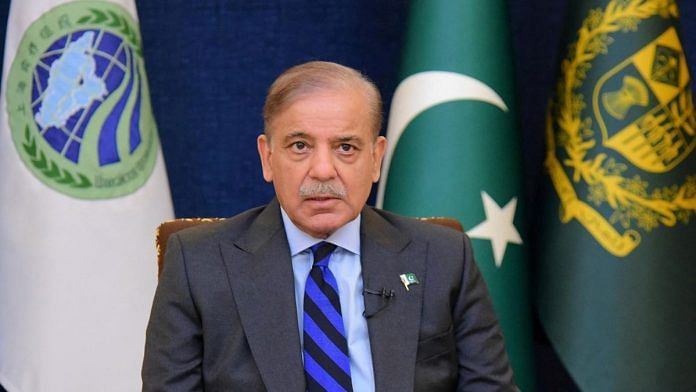New Delhi: Pakistan’s Prime Minister Shehbaz Sharif recently unveiled Pakistan’s five-year economic plan, ‘Uraan Pakistan’, aimed at reviving the country’s economy. While the plan has sparked hope for economic recovery, it has also drawn scepticism, with experts questioning whether it can truly deliver. With major editorials painting a bleak picture of the reforms going ahead, cynicism is rife among Pakistanis about yet another ambitious plan with no impact.
“While the “Uraan Pakistan” plan paints an aspirational picture, its vague strategies and limited grounding in Pakistan’s existing economic and political landscape risk rendering it another unfulfilled promise,” wrote Ikramul Haq, Visiting Senior Fellow of Pakistan Institute of Development Economics, and Abdul Rauf Shakoori, an advocate, wrote in an op-ed for Minute Mirror.
Labelling it a “Wingless Uraan Pakistan”, the authors argued that while the “plan presents itself as a bold vision for the country’s economic future, it suffers from significant ambiguities and a lack of clarity in its strategies.”
The ambitious National Economic Transformation Plan 2024-29 outlines five key pillars: Exports, E-Pakistan (digital transformation), Equity and Empowerment, Environment, Food and Water Security, and Energy and Infrastructure. The ultimate goal is to make Pakistan a trillion-dollar economy by 2035.
“With its wings fettered by a lack of progress on key structural reforms, slow foreign inflows, and increasing militancy and political instability, the chances of Uraan Pakistan taking off appear rather bleak,” Dawn wrote.
The economic plan
Sharif, in his address during the inauguration of the programme, acknowledged the fragile state of the economy his government inherited, adding that Pakistan has repeatedly relied on International Monetary Fund (IMF) bailouts and faced mounting losses from state-owned enterprises. The PM then highlighted export-led growth as the cornerstone of Pakistan’s economic recovery, asserting that “exports are the ultimate savior” for the country. To achieve this, he proposed reducing import restrictions, fostering competition, and incentivising both local and foreign investments. He also stressed the importance of boosting Pakistan’s digital and tech sectors, with a special focus on artificial intelligence (AI) as key drivers of future economic growth.
Foreign Minister Ishaq Dar echoed the need for political consensus and outlined the key goals of the plan, including achieving 6 per cent GDP growth annually by 2028, creating one million jobs per year, securing $10 billion in private investment annually, and hitting an export target of $60 billion by 2028.
Also read: Why do fish eat only Pakistan’s internet cables? Bilawal Bhutto is asking own govt
Ambitious but disconnected from reality
However, analysts argue that a major challenge for ‘Uraan Pakistan’ will be translating its ambitious targets into real-world results.
“Uraan Pakistan has the potential to be a game changer for Pakistan’s economy, if implemented through the adoption of a more comprehensive and inclusive approach. However, its success hinges on designing and instituting a realistic implementation plan, with not only clearly defined targets but also the accountability mechanism to hold people responsible for failure to achieve such targets,” Ahmad Mukhtar, an international economist, wrote for The Express Tribune.
Ali Khizar, Director of Research at Business Recorder, in an opinion piece, said that unlike previous reform-focused strategies, this plan prioritises growth without addressing foundational issues like tax reform and competitiveness. Additionally, the lack of alignment among key stakeholders and misalignment with IMF expectations raises doubts about the feasibility of the plan’s goals and its long-term sustainability.
“The Uraan Pakistan seems more like a wish list than a practical roadmap, listing ambitious growth targets without detailing how to achieve them. As the saying goes, if wishes were horses, beggars would ride. The Uraan document, prepared by the Planning Commission, appears disconnected from earlier homegrown strategies…. But beggars cannot be choosers,” Khizar wrote.
A Pakistani entrepreneur, meanwhile, in a post on X, said, “Without addressing structural issues like fiscal deficits, debt sustainability, and energy crises, ‘Uraan Pakistan’ is akin to ‘Uraan Tashteri’!”
(Edited by Aamaan Alam Khan)







Where is udaan hindustan??